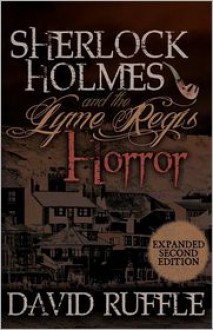I was really excited when this novel wound up on the final list of books we would be reading this school year with my book club. It’s been on my TBR for ages… I can say I’m a real fan of John Fowles having read and loved both The Magus and The Collector. I should have known that The French Lieutenant’s Woman would challenge me immensely. It wasn’t at all what I expected, however I liked and hated it at the same time. Those  480 pages went by a lot slower last week than I had expected. I guess I can congratulate myself for finishing it in five days; for without the book club I may have taken a lot longer to finish it or worse not finished it at all. The first half of the book was slow, but from about page 240 on something changed in the writing and I was hooked.
480 pages went by a lot slower last week than I had expected. I guess I can congratulate myself for finishing it in five days; for without the book club I may have taken a lot longer to finish it or worse not finished it at all. The first half of the book was slow, but from about page 240 on something changed in the writing and I was hooked.
The story is complex and I’m not really sure what to tell you because I could say something that will either steer you away from it or maybe make you feel as if I’m giving you spoilers. In a nutshell, the main characters are Sarah Woodruff and Charles Smithson. Sarah, the French lieutenant’s woman, is a seemingly depressed character mourning a relationship that could have been. She spends her days walking along the streets of Lyme Regis and staring out to sea. She is an utter mystery to the end. To the citizens of Lyme Regis she is a disgraced woman, a blemish on their tight-knit small town. Charles, however, becomes attracted to her difference and falls in love with Sarah, while he’s engaged to the young, pretty, naive Ernestia, while defying the accepted customs and beliefs of Victorian society in 1867.
John Fowles wrote The French Lieutenant’s Woman in 1969. It is a very experimental work because it mixes a Victorian love story, along with an intricate critique of Victorian and modern society. What I mean is that John Fowles presence is right there with you while you’re reading the story. This aspect can be perceived as annoying or engaging. At times you’ll want to tell him to shut the hell up and go away. The consensus in my book club was that it was annoying and didn’t allow them to enjoy the story the way they would have liked. I too felt this but some way some how midway through the book I started to enjoy the concept. I accepted it as if John Fowles accompanied me, holding my hand through the second half of the book, showing me and informing me on life in Victorian times and critiquing modern-day simultaneously. I had begun to accept the experiment. The second half I loved so much I had trouble putting it down. At times, there were footnotes that intrigued me, but also that made me smile.
The characters were all perfect and served the overall purpose for critiquing Victorian life. Even though the story revolved around Sarah and Charles there were a myriad of other important secondary characters that make the novel great. I would say the character of Charles is surrounded by many women considering he was motherless. The only things he has left are his faith in science, his Victorian upper class background and education(which he has difficulty shaking), and his uncle who will hopefully leave him a healthy inheritance.
As for the film of The French Lieutenant’s Woman, released in 1981, screenplay written by Harold Pinter, I haven’t seen it yet but probably will try to since I heard only good things about it. Starring Jeremy Irons and Meryl Streep, how can I pass on those two. If this novel seems like a big hunk of hefty for you but you’d still like to try a novel from Fowles, I’d recommend The Collector as a good place to start. It was his first published work in 1963, even though he’d already started writing The Magus first. Fowles was interested and influenced by existentialist writers like Albert Camus and Jean-Paul Sartre and this aspect is one of the common themes that runs through his novels. Fowles was an English teacher for most of his adult life. He taught English in France at the University of Poitiers and in Greece on the Peloponnesian island of Spetsai. This is where he met his first wife Elizabeth Christy. His experiences in Greece set the scene for his third successfully published novel called The Magus in 1966. Oddly enough his second wife was called Sarah and he lived the rest of his life primarily in Lyme Regis. He died in November 2005.


 Log in with Facebook
Log in with Facebook 








